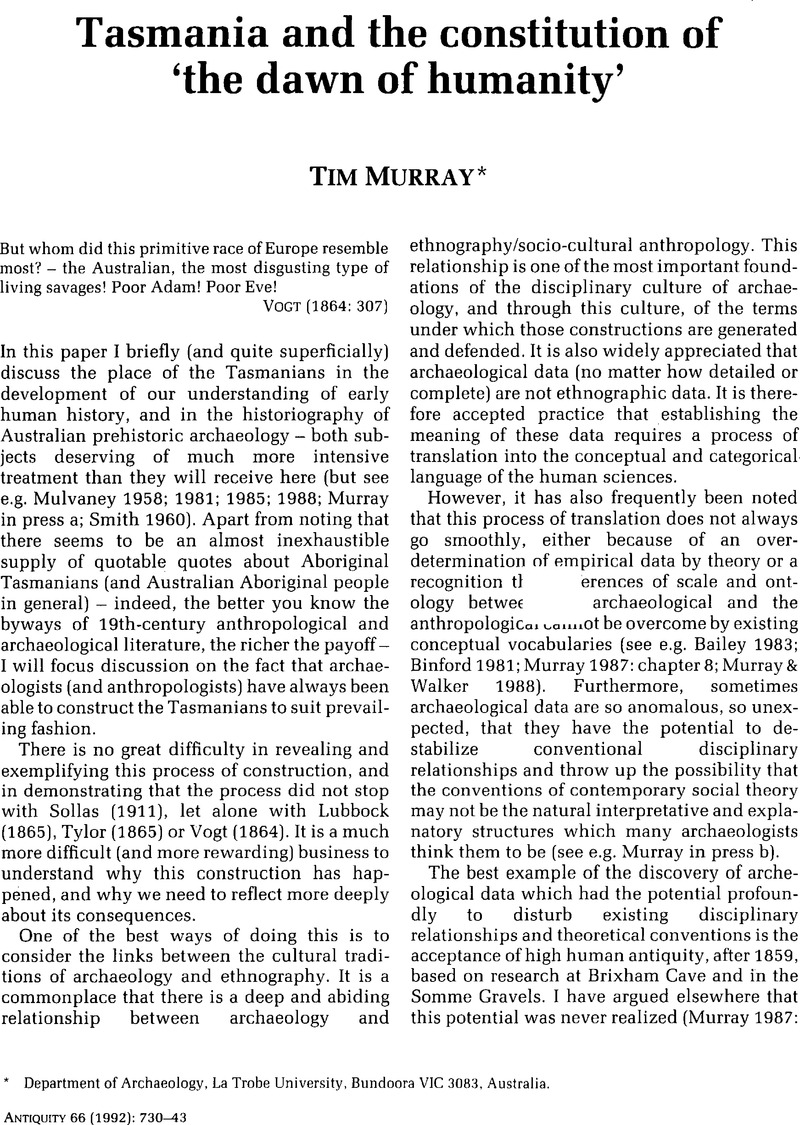Crossref Citations
This article has been cited by the following publications. This list is generated based on data provided by Crossref.
King, Barbara J.
1993.
Chimpanzee material culture: Implications for human evolution. By W. C. McGrew. Cambridge: Cambridge University Press. 1992. xvi + 277 pp. ISBN 0‐521‐42371‐6 $79.95 (cloth).
American Journal of Physical Anthropology,
Vol. 91,
Issue. 3,
p.
393.
Murray, Tim
1993.
Archaeology and the threat of the past: Sir Henry Rider Haggard and the acquisition of time.
World Archaeology,
Vol. 25,
Issue. 2,
p.
175.
Russell, Lynette
and
McNiven, Ian J.
1998.
Monumental Colonialism.
Journal of Material Culture,
Vol. 3,
Issue. 3,
p.
283.
Yoffee, Norman
2005.
Myths of the Archaic State.
Palacio-Pérez, Eduardo
2013.
The Origins of the Concept of ‘Palaeolithic Art’: Theoretical Roots of an Idea.
Journal of Archaeological Method and Theory,
Vol. 20,
Issue. 4,
p.
682.
Murray, Tim
2015.
Social Theory in Archaeology and Ancient History.
p.
19.
Taylor, Rebe
2016.
The First Stone and the Last Tasmanian: The Colonial Correspondence of Edward Burnett Tylor and Henry Ling Roth.
Oceania,
Vol. 86,
Issue. 3,
p.
320.
Lydon, Jane
2019.
Feeling for the deep past: archaeological analogy and historical empathy.
Australian Archaeology,
Vol. 85,
Issue. 1,
p.
2.
Di Brizio, Maria Beatrice
2022.
Une Préhistoire universelle? Enjeux des Researches into the Early History of Mankind and the Development of Civilization (1865) D’edward Burnett Tylor.
ORGANON,
Vol. 54,
Issue. ,
p.
33.
Murray, Tim
2023.
Mr Miles, Mr Oldfield and Professor Huxley: Early Thoughts on the Origins of the Australians.
Bulletin of the History of Archaeology,
Vol. 33,
Issue. 1,
Berk, Christopher D.
2024.
On stone tools and the ‘prehistoric’: The value of Tasmanian Aboriginality at the Smithsonian.
History and Anthropology,
Vol. 35,
Issue. 5,
p.
1198.



